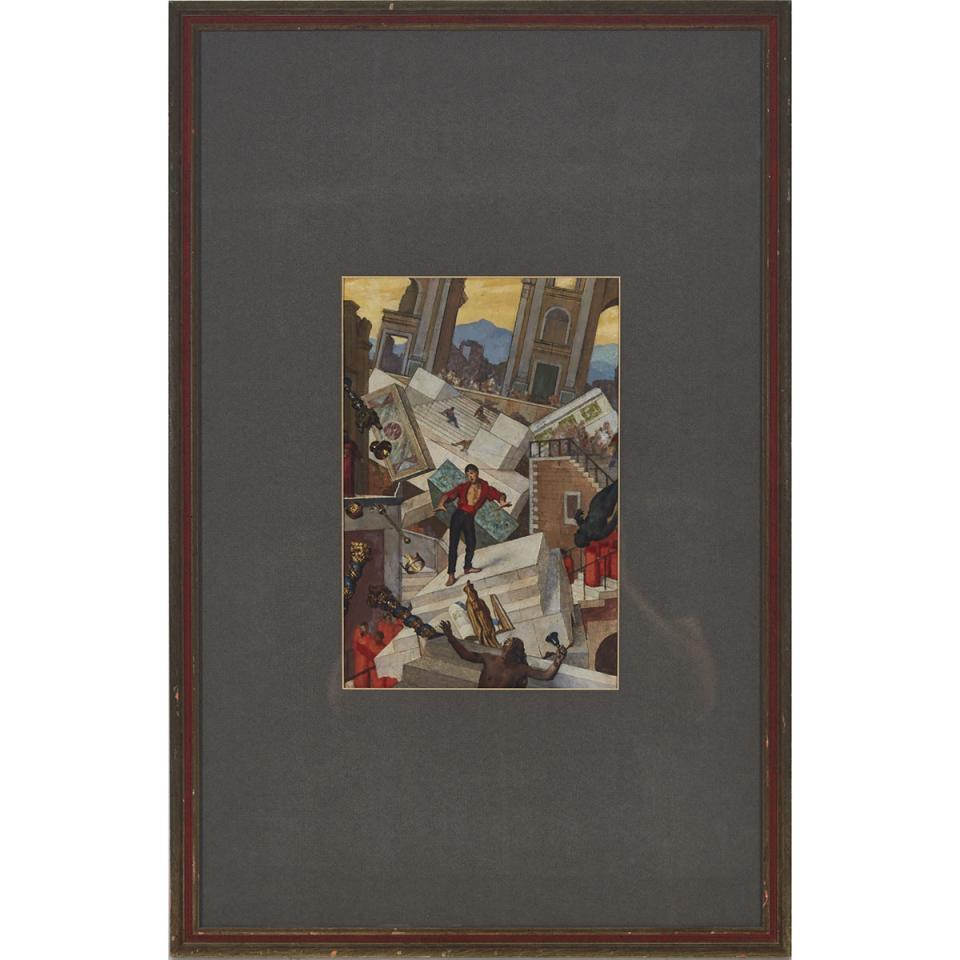Lot 54
Robert Hale Ives Gammell (1893-1981)

Lot 54 Details
Robert Hale Ives Gammell (1893-1981), American
ERA’S END ( A STUDY FOR), 1950’S
Oil with pencil sketching lines on paper, with dimension annotations in pencil left and right margins, inscribed: “Warburg Institute Journal Vol 7” to the margin in pencil along the bottom edge lower right
Image/Sheet 11.8" x 7.9ins — 30 x 20 cms; 23.2" x 15.9ins — 59 x 40.5 cms
Estimate $500-$700
Additional Images

Provenance:
With Gregg Frame Studio, Columbus, Ohio stamp to backing;
Ex. Coll. Richard Cohen, Toronto & the US, an artist that knew and worked with Gammell;
By descent to his wife, Burlington, Ontario;
Literature:
Inscribed: Warburg Institute Journal, Vol. 7;
R. H. Ives Gammell Studios Trust; 2001; Boston MA. p. 108
Note:
The consignor’s deceased husband, Richard Cohen, was an illustrator who studied in Gammell’s studio. Mr. Cohen worked in movie special effects, winning two Oscars.
According to Elizabeth Ives Hunter, the artist’s god-daughter, art historian and author of Gammell’s biography, this work is a study for Gammell’s finished painting, “Era’s End.” Her father, Theodore Valsam of Walpole, Mass. was Gammell’s assistant from 1928-1979. Theodore drew the grid lines in this study and he also did the first “lay-in” for the larger finished work executed later in 1967.
Ms. Hunter also quotes from Gerald M. Ackerman's essay, The Heroic Accomplishments of R. H. Ives Gammell and the Future of American Figurative Painting which is in the book “Transcending Vision - R. H. Ives Gammell 1893-1981” citing the following:
To see how consistently he (Gammell) hung upon this mixture of personal and universal fate, of seeing the macrocosm reflected in the microcosm, one need look only at ... an allegory, Era’s End of 1967 ... which is still concerned with the loss of traditional values, and with his personal place in a crumbling civilization (certainly the young boy is Gammell).
Ives was concerned with this theme for many years and his diaries suggest that he began to personalize it in the very early 1950s after the publication of his book, The Twilight of Painting. It was not unusual for him to start with a pictorial concept, put it aside for a few years, and then get back to it.
We are grateful to Ms. Hunter for providing this further catalogue information.






